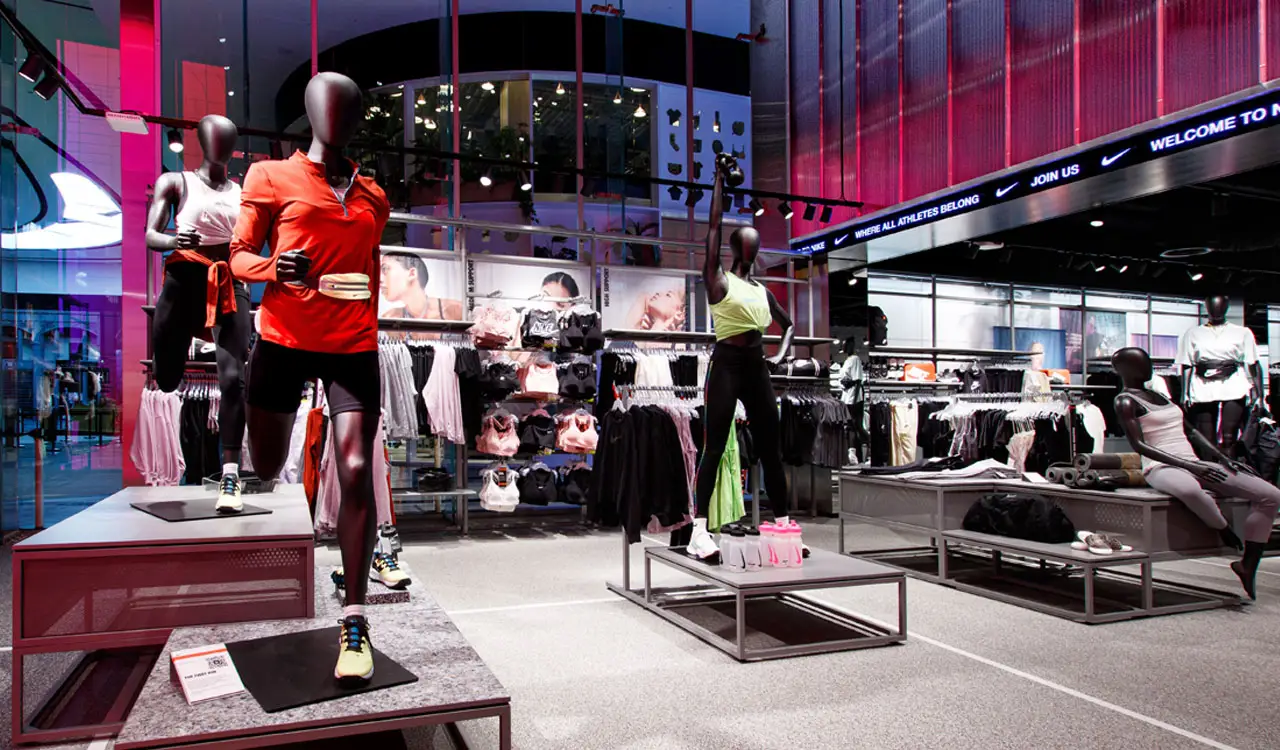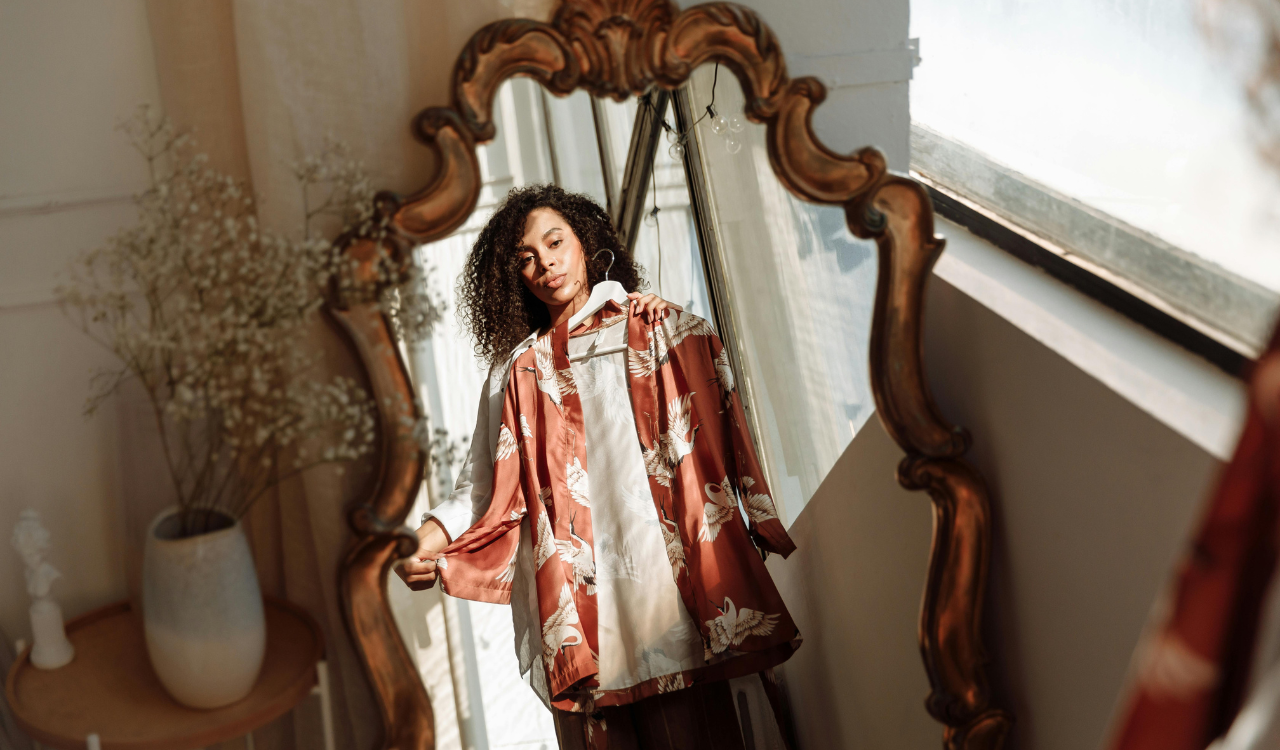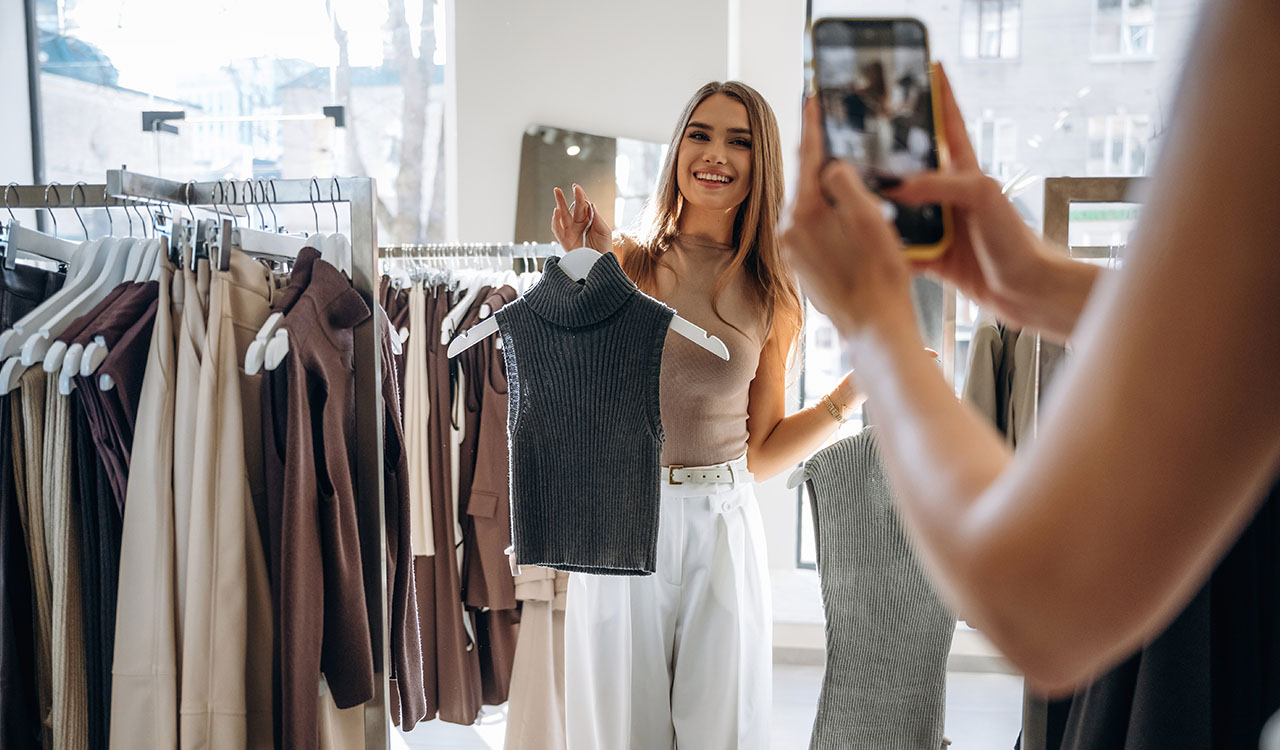Taking a Deep Dive, Nike Live is Reborn as Nike Well Collective
When Nike introduced its House of Innovation its impetus was to take their “flagship” to new heights while pushing the boundaries of immersive brand experiences. The high-concept store launched in 2018 in New York, with subsequent openings in Paris and Shanghai. All three were over-the-top “brand stands,” as much interactive museum as store.
Nike’s “Move to Zero” includes products made with at least 20 percent recycled content and mandates that Nike-owned and operated facilities must be powered by 100 percent renewable energy by 2025. Additionally, they are committed to a 30 percent carbon emissions reduction by 2030 as well as the diversion of 99 percent of all footwear manufacturing waste from landfills.
Going Local
It was also around this same period that Nike embarked on a much-publicized divorce from many of its long-term wholesale vendors, whose propensity for discounting had commoditized its valued brand. Nike responded with a two-pronged strategy. The first, “Customer Direct Offense,” described a new company alignment to better serve the consumer personally, at scale. Simultaneously, Heidi O’Neill, President of Nike Direct and Adam Sussman, Chief Digital Officer, were tasked with uniting physical and digital retail to serve consumers with the best of everything from Nike.
Nike recognized that strategically located stores imbued with “Nike magic“ would offer the opportunity to tailor both products and messaging to an ever more specialized and localized audience. This led to a series of prototype retail concepts, essentially laboratories for learning.
Nike Live, piloted in 2018, was “specifically designed to be a service hub for local NikePlus members,” said Heidi O’Neill. It was driven by the insights and engagement of thousands of NikePlus members across five zip codes in LA. Nike Rise was launched in 2020 and was locally focused but on a greater scale, featuring in-store events.
And last summer Nike introduced Nike Style, with a gender-agnostic product section and a studio for social media content development. At the time it was described as a “remixed expression of sports retail culture that blurred the lines between physical and digital.” To date, there are 290 Nike stores throughout the country.
Nike Live Gets Revived
To strengthen Nike’s connection with wellness and take share in that lucrative $1.5 billion market, Nike elected to refocus “Live.” Enter the Nike Well Collective stores.
The new approach, introduced this June builds on Nike’s five pillars of holistic fitness: movement, mindfulness, nutrition, rest, and connection. The Collective is geographically tuned to local markets with a female-centric focus.
The Well Collective brand messaging revolves around “embracing expanding definitions of wellness — integrating mind, body, and life for a more inclusive approach to fitness, sport, and holistic health.”
Nike elaborated, “these digitally-driven, member-focused spaces — with curated product assortments supporting women’s sport and lifestyle journeys and every moment in between — are the ideal backdrop to continue to improve and enhance how it serves holistic fitness and wellness.” Members in this case refers to exclusive services that those customers receive.
More Ratification
Liz Weldon, VP of Global Women’s Brand Management at Nike described how the culmination of the project is “a dream come true and many years in the making” on her LinkedIn page. She also expressed her gratitude for the development team, “The best part is, what this can offer everyone on their personal fitness journey!”
To give the rebranding the appropriate gravitas, Nike plans to add a cadre of over 1,000 global fitness trainers as well as an engaging a diverse roster of world-class and award-winning academics, researchers, scientists, medical professionals and academic authors across its holistic fitness pillars. \”This worldwide and world-class network of trainers, coaches and experts will help advise and inspire Nike Well Collective, helping create holistic fitness content, programming and experiences across our entire ecosystem,\” said Nike\’s Amy Montagne. Other parallel efforts include renaming its @niketraining Instagram handle to @nikewellcollective and announcing the sunset of its @nikeyoga handle.
Social media content is also being tailored towards women, with a particular focus on real, daily wellness activities, to “deepen Nike Member relationships with 1:1 connections, easy digital services, and access to her local fitness community.”
Walking The Talk
If there were any questions about the commitment Nike is making to this personal 1:1 relationship building, the flurry of Nike Well Collective store openings this summer and early fall should dispel that notion.
While Nike has yet to publicize any unit rollout projections (and inquiries on the matter went unanswered), a random Google search revealed impressive numbers of geographically diverse Well Collective openings to date. To me, this signals a strong indication of intent and a commitment to the concept.
Local and Localized
One of the unique aspects of the Collective rollout is the degree to which Nike is configuring each store differently. No doubt, they are using boatloads of data and analytics — including demographics, co-tenancies, and online sales patterns to size and customize each store — to adapt to local markets. While the general prototype design elements are well established, no two stores are exactly alike, each responding to the locale. Case in point: the newly opened Nike Well Collective located in Ridgedale Center in Minnetonka, MN. Brookfield Property owns the center and is also home to the nation’s third, ginormous Dick’s House of Sport which opened in 2022.
Two illuminated storefronts “swooshes” introduce the mall visitor to the Well Collective. If it was Nike’s intent to underplay the new concept’s identity, they certainly succeeded. Only the door carries the Well Collective signage, which I saw only upon exiting.
For “digital first” consumers already familiar with the WC, the storefront’s twelve-foot by twelve-foot brightly colored pictograms of female runners might be a tip-off, as these stylized illustrations appear online. That said, the restraint and slight ambiguity of the storefront graphics did pique my interest as I suspect it would other customers. And given the brand’s emphasis on localization, it’s not surprising to see “Welcome Minnetonka” emblazoned on the doormat at the entry.
There are large-scale message boards installed in prominent places around the store that will announce wellness and fitness events and clinics, integral to the wellness concept. It is refreshing that in a time of digital everything, Nike chose to go old school with these analog boards. The subtext is, “We are keeping it basic and down-to-earth.”
Curated Offerings
The Collective’s focus is on female fitness and the in-store selection represents about a 65-35 gender split. The intentionally edited collection keeps shoppers out of “product overwhelm.” At the same time, it enables an entire store to be remerchandised more often, helping to align online with offline offerings and keeping the concept fresh.
Unified commerce and endless aisle choice are reinforced by tasteful and understated signage prompting the customer to “see more in the app” promoting digital-physical connectivity.
Consultative selling and one-to-one relationship building are focused on personalized fitness goals and helping customers identify the right stuff.
Sustainability
Nike’s “Move to Zero” initiative, which is now four years old, is apparent in the number of products made with at least 20 percent recycled content, sporting unique hangtags. The sustainability commitment mandates that Nike-owned and operated facilities must be powered by 100 percent renewable energy by 2025. Additionally, they are committed to a 30 percent carbon emissions reduction by 2030 as well as the diversion of 99 percent of all footwear manufacturing waste from landfills. The Collective’s flooring contains Nike’s recycled rubber. And there’s more: playground equipment manufacturers are utilizing Nike’s footwear waste.
DTC/Wholesale Detente
Overall, Nike’s Well Collective appears to nicely shoehorn its way into the ever-evolving unified commerce approach every major brand is attempting to realize. At the same time, Nike will walk a tightrope, along with every other major manufacturer, balancing wholesale with direct-to-consumer channels.
The new Collective niche concept is a good example of the coexistence of Nike’s direct-to-consumer business model and its massive wholesale commitments. In Minnetonka, there is an informal collaboration with Dick’s House of Sport; if Collective customers cannot find merchandise, the sales staff sends them to Dick’s and vice-versus. Peaceful and productive co-existence.





